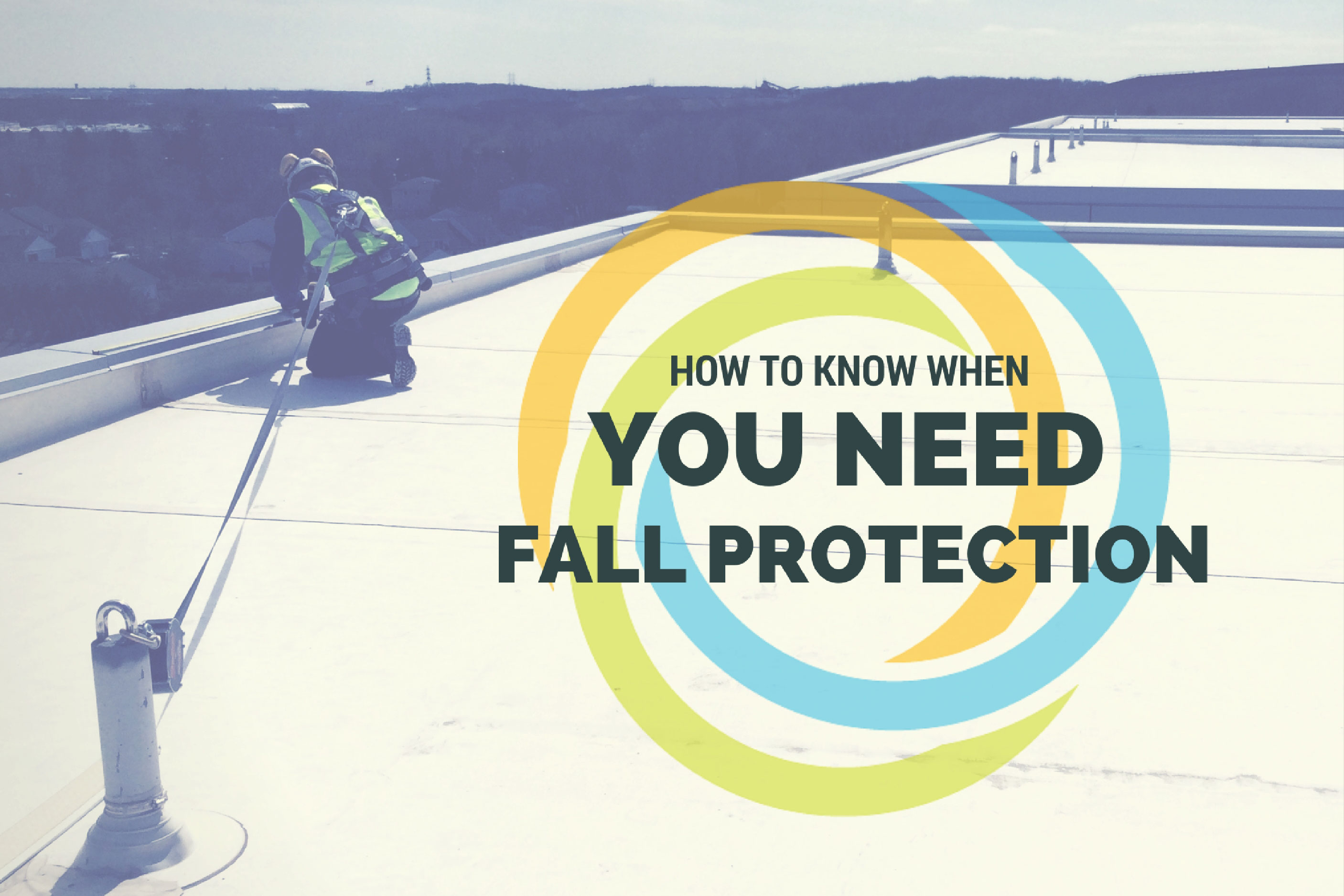How to Know When You Need Fall Protection – A Complete Guide

Fall protection regulations can be tricky. Depending on what industry you are in, what task you are performing, or what piece of equipment you are using, your requirement to have and utilize fall protection can be anywhere from 0’ to 30’. That’s a big difference without even counting all the various requirements at heights in between. So, how are you to know when you need fall protection?
The simplest answer is, absent the presence of equipment, machinery, or some substance you can fall into, if you are working more than 4’ above a lower level and do not have some type of fall protection, you MAY be in violation. If you are not 100% sure if you are in violation or not, you either need to do some research or reach out to somebody who does know the answer. Simply proceeding with your work because you weren’t sure of the specifics is not acceptable.
Industry
Let’s start with the quick overview. Each of the OSHA regulations has its own starting point. Keep in mind that each of these starting points has a caveat: If you are working over some equipment or substance into which you could fall and do harm to yourself, then you must be protected from doing so even if you are mere inches above it. All other requirements get overridden.
Otherwise, the simple breakdown is this:
General Industry (anyone governed by 29 CFR 1910) – 4 feet
Shipyards (anyone governed by 29 CFR 1915) – 5 feet
Construction (anyone governed by 29 CFR 1926) – 6 feet
Longshoring (anyone governed by 29 CFR 1918) – 8 feet
Be careful though, because these numbers are by no means definitive. There are many exceptions to these rules, most notably in construction, which brings us to how heights differ by task.

Task
Breaking the rule up into industry helps to give you a general idea of when you need fall protection given your task – but only in a very broad sense. For instance, if the work you are doing is considered maintenance, then you would have to abide by the general industry rule, whereas any work deemed construction or demolition would mean you’d have to abide by the construction rule. However, within those industries there are specific tasks that are treated differently.
A few notable examples are roofing and steel erection. Both are considered construction activities, so they fall into 29 CFR 1926 which in general requires fall protection at 6’. However, here are your actual requirements for each:
Steel Erection –
- No fall protection is required for anybody involved in steel erection activities until they are 15’ feet in the air.
- At 15’, all workers involved in steel erection activities MUST have and utilize fall protection EXCEPT connectors and deckers.
- Connectors must have fall protection and the ability to use it from 15’ to 30’ (or two stories, whichever comes first), HOWEVER, they may opt to not use it.
- Deckers may utilize a Controlled Decking Zone (CDZ) from 15’ to 30’ (or two stories, whichever comes first). For details on CDZs, refer to 29 CFR 1926 Subpart R.
- At 30’ or two stories (whichever comes first), ALL personnel involved in steel erection activities MUST have and utilize fall protection, no exceptions.
Roofing –
- Roofers (and only roofers – other trades working on a roof do not receive the allowances given to roofers) may opt to utilize a warning line and safety monitor system instead of other fall protection.
- In such cases, the warning line must be 6’ from the edge of the roof (or more) or 10’ if mechanical equipment is operating on the roof and travelling toward that warning line.
- Safety monitors are not optional. While there are situations where a safety monitor may be used without a warning line (i.e. – on a roof less than 50’ in width), there is no situation in which a warning line can be used without a monitor.
- This applies to low-slope or flat roofs. It also applies if you have an elevated section of roof within the edges of a lower roof, if the elevated section is 6’ or more above the lower section.
- Good advice for a roofer is, if you’re on a roof and don’t see something between you and the edge, you might not be properly protected, so ask.
What should be fairly obvious from the above two examples is that when we start to discuss specific procedures, things get very…well…specific. Suddenly a catch-all rule doesn’t always apply…or can’t always apply. Therefore, things get broken down further. Bit by bit by bit. This is not something you would just know or something that you could assume, so, before beginning your work, make sure that you understand whether or not there are different rules for the task you are about to perform.
Equipment
Equipment can also play a factor in when fall protection is required. For instance, you must be properly tied-off at all times when in an aerial lift. This overrides the 15’ requirement in the steel erection regulation as it is a more specific requirement and because the manufacturer requires it. Scaffolding has a requirement of 10’ that exists solely for being able to work on top of one bay of scaffolding (often greater than 6’ high) without having to concern yourself with railings or other means of protection. Ladders even have their own rules, depending on whether you’re just climbing or working from them. With the new Walking and Working Surface regulation in place, new fixed ladders over 24’ must now have fall protection devices in place as opposed to the old requirement for cages or wells. In order to find out if your equipment has a special requirement, refer either to the operator’s manual or to the specific section in the OSHA regulations that governs your equipment.
Of course, each of these situations that we’ve already discussed has additional rules, requirements, and exceptions that cannot be completely detailed in an article without completely reproducing the regulations. It is important for you to fully understand the situation in which you are working before you work. This can be done through your own research (www.osha.gov has great information), but it can also be done – and should also be done – through training. All employees who need to utilize personal fall arrest systems MUST be trained in their use, but it is a good idea to train anybody that is utilizing fall protection equipment, even if it’s just railings, because it will teach them how to recognize hazards and how to avoid putting themselves in dangerous situations.
In the end, to answer the question, “How do I know when I need fall protection?” is simple. You might not, so trust your gut and if something doesn’t feel right, ask. If you’re over the basic height requirement listed above for your industry and have no fall protection, don’t worry about whether or not you might be an exception to the rule. Ask. If you’re not satisfied with the answer you’re given, seek out somebody who knows. Whether it’s a safety group on LinkedIn or a friend you know in the industry, find somebody who knows the answer. Don’t put your life at risk because somebody else doesn’t know what is required, because once you fall, there is no turning back.
